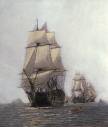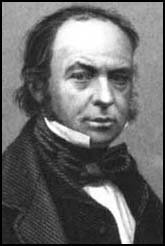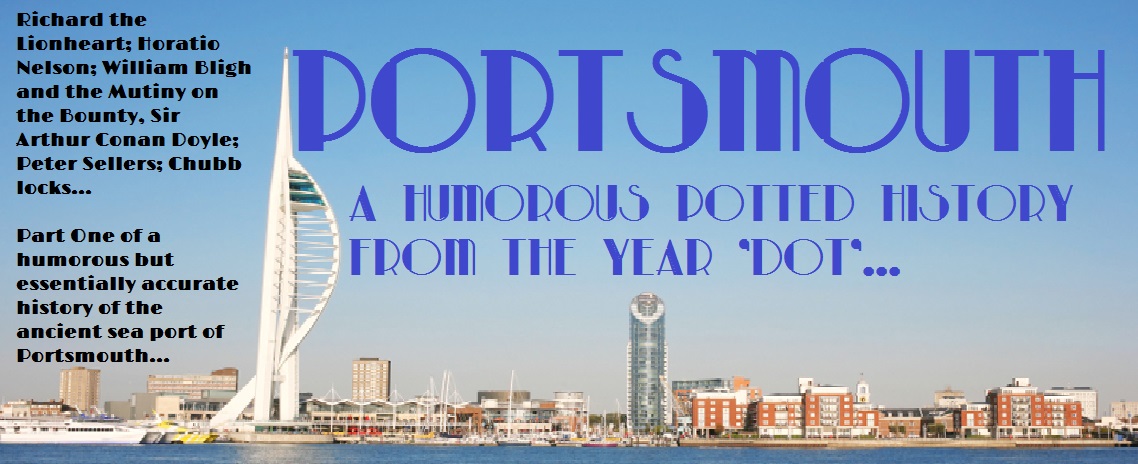George Meredith, John Pounds, Isambard Kingdom Brunel, Sir Walter Besant, Jonas Hanway, Vicat Cole, Charles Dickens, Sir Frederick Madden. Charles Dickens (1812 - 1870)
Charles Dickens (1812 - 1870)
Arguably the most famous Portsmouth born author and certainly the most popular novelist of the 19th Century, Dicken's was born at 393 Commercial Road, Portsmouth on the 7th February 1812.
Herbert George (HG) Wells (1866 - 1946). 
As a young man, this distinguished writer of such classics as; The War of the Worlds, The Invisible Man and The Time Machine, lived in Southsea and was apprenticed to the drapers; Edwin Hyde, which at that time was situated on the corner of Kings Road and St Pauls Road.
He did, however, despise the trade , (so much so, he recorded his experiences in his novel 'Kipps'), and so eventually forfeited his indentures and became a student teacher. And the rest, as they say, is history. Sir Arthur Conan Doyle, (1859 - 1930)
Sir Arthur Conan Doyle, (1859 - 1930)
Having obtained his MB in Edinburgh in 1881, the young Dr. Conan Doyle chose to establish a medical practice in Portsmouth and so took residence at No 1, Bush Villas, Elm Grove in Southsea in 1882.
By 1885, he had obtained his MD but, since he was already fairly preoccupied with becoming a writer, his practice did not expand very rapidly.
It was, in fact, at Bush House that he wrote "A Study in Scarlet" which was the very first story to include his now internationally famous detective; Sherlock Holmes.
A little known fact is that Conan Doyle based Doctor Watson, (Holmes' great friend and biographer), on a Portsmouth man namely; James Watson, a close friend, fellow Doctor and member of the Portsmouth Literary and Scientific Society, (of which Conan Doyle was secretary).
Also a keen sportsman, Conan Doyle eventually became Captain of the Portsmouth Cricket Club and, (for his sins), also helped to found Portsmouth Football Club.
After eight very happy years, he left Portsmouth in 1890 for the sole purpose of advancing his medical career but, just one year later, (happily for us), he abandoned the medical profession in favour of a literary career. William Lionel Wyllie, RA (1851 - 1931).
William Lionel Wyllie, RA (1851 - 1931).
One of the most celebrated marine artists of modern times, William Wyllie lived at Tower House in Broad Street, Portsmouth, where he painted a great many pictures depicting Navy life.
His last great work was that of a quite superb panoramic view of the Battle of Trafalgar, which he very generously presented to the Nation in honour of England's most famous Naval hero; Admiral Lord Horatio Nelson, and which can be seen on display in the Historic Dockyard Museum.
Such was his standing as a marine artist, upon his death the Royal Navy afforded Wyllie the most unique honour of having his body ceremoniously conveyed in a cutter of HMS Nelson up the harbour to Portchester Castle where he was peacefully laid to rest in the picturesque churchyard of St Mary's.
King William the Fourth, (1830 - 1837). 
The third son of (mad) King George the Third, and known as the "Sailor King", he was born in 1765.
As a midshipman, the young Prince spent a good deal of his time in Portsmouth and often stayed at the George Hotel in the High Street.
(The very same Hotel incidentally where, in 1805, Nelson ate his last breakfast before sailing to his final battle; Trafalgar. Sadly, this major historic building was destroyed by German bombers during the Second World War).
One of the most enduring story's of Prince William's time in Portsmouth was when he became involved in a fight with a waterman after visiting a public house in Tower Street, (adjacent to Broad Street, near the Round Tower).
The cause of the fight was simply that the Prince had consumed all of the waterman's beer. As a result, William, (who the waterman believed was just a little 'snot-nosed' midshipman), was given a 'sound thrashing'.
However, on learning Prince William's true identity, the waterman feared that, having struck the King's son he would, at best, be incarcerated in the Tower of London for the rest of his life, or at worst, be hanged at the nearest yardarm.
Instead, (luckily for him), he was heartily commended by Prince William and, as a reward, was given a post in the Customs and Excise Department.
 Isambard Kingdom Brunel, (1806 - 1859)
Isambard Kingdom Brunel, (1806 - 1859)
Born in Portsmouth on the 9th April 1806, Isambard Kingdom Brunel was the only son of Sir Marc Brunel.
In 1823 Brunel began working with his father building the Thames Tunnel and was eventually appointed resident engineer of the project. In 1829 Brunel designed the River Avon suspension bridge.
In 1833, he was made chief engineer of the Great Western Railway and worked on the line linking London to Bristol.
This established Brunel as one of England’s, if not the world's, leading engineers.
Brunel then designed and built the Great Western which made its first voyage to New York in 1838 and took fifteen days to complete.
At 236 ft long, it was the largest steamship ever built.
Brunel then designed the steamship the Great Britain.
With an iron hull it was also fitted with a six bladed propeller.
The Great Britain could carry 250 passengers, 130 crew and 1,200 tonnes of cargo. She set sail for New York in 1845.
In 1852 Brunel built the Great Eastern for the Eastern Steam Navigation Company. She also had an iron hull but was driven by two paddle wheels. A goliath, the Great Eastern was designed to carry 4,000 passengers.
Sadly, a number of engineering disasters began to affect his health and, shortly after being photographed and watching the Great Eastern’s trials, Brunel suffered a stroke.
He died on 15th September, 1859 and is buried at Kensal Green cemetery.
Marc Isambard Brunel, (1769 - 1849) 
The son of a prosperous French farming family, (Jean Charles Brunel, and Marie Victoria Lefevre), Marc Isambard Brunel was born on 25 April 1769 in the hamlet of Hacqueville in northern France.
He had a natural talent for drawing and maths and, at the age of eleven, decided he wanted to be an engineer, much to the chagrin of his father.
In 1787, Marc joined the French navy. After six years service, he returned to the shores of the now revolutionary France. Being a Royalist, Marc fled to the United States where he practiced as an architect and civil engineer in New York.
In 1799, having perfected a way of making ships' pulley blocks mechanically, rather than by hand, he set sail for England in order to offer his services to the British government.
Whilst living in London, he met his wife to be, Sophia Kingdom, and on the first November 1799 He married her.
Happily, the British government were suitably impressed with his block pulley making mechanism and so he was placed in charge of installing his machines at Portsmouth dockyard.
Marc and his wife settled in Portsea where, on the 9th April 1806, their son, Isambard Kingdom Brunel was born.
At that time, pulley blocks were laboriously hand made by upwards of 100 Portsmouth dockyardmen. Marc’s system, comprising 43 machines, could be run by just 10 men and produced blocks superior in quality and consistency to those made by hand with a higher production.
As history now shows, Marc Brunel’s machines, installed in Portsmouth Dockyard, became one of the forerunners to completely mechanized production.
Marc Brunel was elected to the Royal Society and knighted in 1841. He died eight years later.

2 comments:
Hello there... care to add your blog at KeywordDir.info?
hello... hapi blogging... have a nice day! just visiting here....
Post a Comment